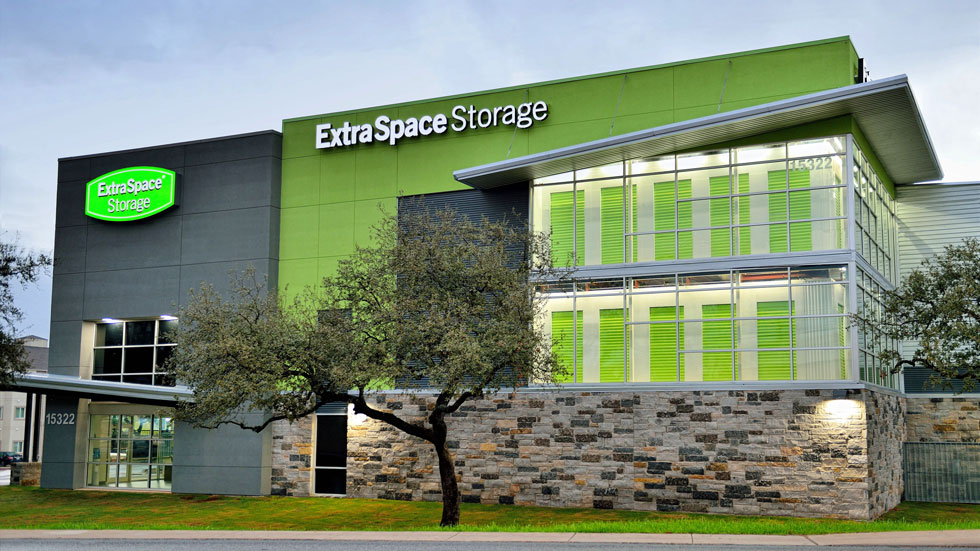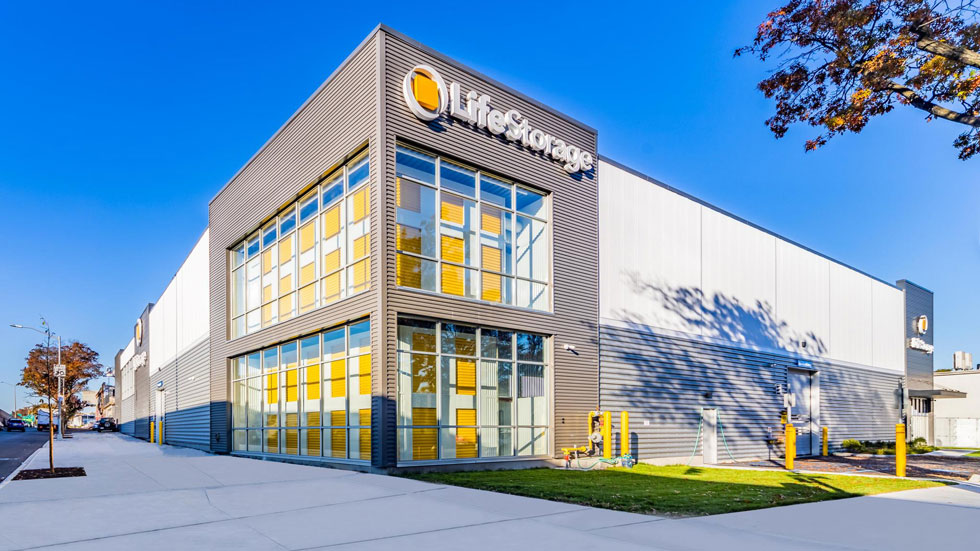Extra Space Storage Inc. (EXR) is no stranger to combining forces with peers in the self-storage sector, but its recent $12 billion acquisition of Life Storage Inc., its most ambitious move to date, offers a level of scale that the REIT expects will unlock value on multiple fronts in the years ahead.
The merger, which was announced in early April and officially closed last month, will position Extra Space as the largest owner and operator of self-storage properties in the U.S. with more than 3,500 combined locations, according to the REIT.
So far, the deal has been received positively by analysts and investors. “Extra Space as a company has a really strong operating platform that is very data-driven, a management team that has a long-standing reputation for making really smart capital allocation decisions, and this really expands the scope of their business,” says Uma Moriarity, senior investment strategist at CenterSquare Investment Management. “Broadly speaking, this is a deal that we view as strategic and accretive long term for the company.”
Analysts are keeping an eye on the successful integration of Life Storage and whether a much larger post-merger entity will make external growth more difficult. However, Extra Space has experience in blending companies, most recently with its 2022 acquisition of Storage Express. In a similar move to add scale, the REIT acquired 107 self-storage properties, 14 future development sites, and the systems of Storage Express in a deal valued at $590 million.
Prior to that, Extra Space acquired SmartStop Self Storage in 2015. The REIT purchased 122 owned locations and assumed third party management of an additional 43 locations. Like the Life Storage portfolio, when Extra Space acquired SmartStop it anticipated driving significant upside in both occupancy and rent per square foot, to bring the properties in line with the performance of its own properties in those same markets. It did so, making it an accretive transaction for shareholders.
The self-storage sector benefited from outsized demand during the pandemic, a trend that is now normalizing. Extra Space will have to manage a slowing environment in the context of adding a large portfolio into the operating platform. “We will see how it plays out, but we have had a long history of seeing Extra Space, from an operational perspective, produce really strong results. So, we would hope that this would continue in this merger as well,” Moriarity says.
REIT.com recently spoke with Extra Space CEO Joe Margolis to learn more about how the deal came together, next steps for integrating the two companies, and how the REIT plans to maintain its position as a leader in the self-storage industry.
Describe the backstory of this acquisition. Were you looking for external growth opportunities, or what sparked this deal?
We’re always looking to find accretive, strategic ways to grow the company and to add value to the shareholders. As everyone who has read the (SEC form) S-4 knows, Public Storage (NYSE: PSA) initiated discussions with Life Storage late last year and eventually went public with a “Bear Hug” letter. Life Storage then reached out to several other potential counterparties to see if they were interested. Joe Saffire (Life Storage CEO) called me and asked if I wanted to get together and talk about this, and we had that discussion that grew into the transaction. We ended up being able to agree to terms and put the two companies together.
Aside from the size, what do you like about this deal? You have said you expect to get $100 million, minimum, in estimated synergies. Where do you see an ability to generate value?
We feel strongly that this deal provides long-term value for our shareholders, and I'll speak of it in a few ways. One is both the expense and revenue synergies that you mentioned. We've targeted a minimum of $100 million, and I'm very confident we will exceed that number. That's both cost savings, because you only need one CEO, one board, etc., and also revenue synergies. We feel properties perform better on our platform than anyone else's platform. When we looked at the Life Storage platform by market, by individual property comparison, and all different ways, we found about a 2% differential in occupancy and a 14% to 15% difference in net rent per square foot.
We are excited that once we get all the properties on our platform and on our systems, we will be able to extract more from them. There are lots of other advantages having to do with scale. We’ve already been upgraded by S&P to BBB+, and that provides an immediate reduction in the interest rates in our credit facilities and will provide cheaper financing in future bond offerings.
More data is also very important to us. We're a data-driven company. Every decision we make is based on data analytics and A/B testing, and now we have 50% more stores and 50% more customers, and lots more opportunities to do more testing. We now have a portfolio with improved diversification so that our exposure went from 61% to 48% in our top nine markets. We reduced our exposure in the Midwest and California and increased it in Texas, Florida, and the Southeast. We think that's all good. Greater diversification provides greater stability of returns. We have a larger portfolio to look at for solar projects, lighting retrofits, and value-add changes. The scale of this provides many, many opportunities for us to unlock value.
What is your strategy on branding?
Of the 1,200 newly acquired stores, we are in the process of rebranding 143 to the Extra Space brand. The remainder will remain Life Storage brands, and we'll have a separate website and a separate digital footprint and separate customer acquisition channel. But the operations will be the same. It will be the same revenue management system, the same manager process and experience. A store manager could work in an Extra Space facility on Monday and a Life Storage one on Tuesday and have no problems at all. But in the market, there will be two brands.
What were the biggest challenges in putting this deal together?
When you asked what the opportunity was, the answer was a lot about scale. Scale was also the biggest challenge. We hired 2,700 employees in one day, and we onboarded 1,200 stores. We had to train all our new personnel, and we had to transfer a lot of data and make sure it didn't get corrupted or lost. We needed to move to one operating system. So, the scale and complexity of it was a big challenge. Life Storage had a robust business. They had a very large third-party management business that we inherited. They had a number of joint venture partners that are now our partners, and we need to merge all of these businesses with as few disruptions as possible.
Obviously, you don’t flip a switch on these transitions. Can you talk a little bit about the roadmap for blending these two companies?
Among the two most urgent things, one is the people. We needed to get the Life Storage people, the day after the merger, to be able to rent units and take payments and assist customers. The Life Storage folks were incredibly cooperative and gracious in giving us access to their employees to do training before closing. We have made big strides in that area, but we'll continue to train and onboard our new teammates.
The second thing revolves around our point-of-sale system, which we call Breeze. In 19 days, we transferred 1,200 stores onto our operating system. Now that the stores are on our operating system, and all the store managers are trained to use that operating system that controls data collection, pricing, tenant insurance sales, integrated marketing plans–everything runs through that system. So, the big first step was to get things on our platform and under our control.
What are some of the next steps now and in the next few months?
Lots of different areas. As I mentioned, we will continue training and integrating our new teammates and make sure that everyone knows what's expected of them and has the tools, resources, and a place to turn if they have questions. Cultural integration is important too.
We want everyone to understand that we are a values-based company and we act in certain ways, and we expect everyone to treat each other with respect. Life Storage had a very similar culture so that shouldn't be difficult, but we're not losing sight of that. And then we’re focused on the extraction of the synergy and the advantages from this company. It's great for us to say we're going to do certain things, but we're in the proving stage. Now we have to do it.
Do you have a target date for completing the work needed to fully merge the two companies?
We just had our earnings call, and what we've told our investors is that by the first quarter of 2024 we will have achieved our run rate of at least $100 million in synergies.
You’ve mentioned onboarding and blending the cultures. Is there anything in particular that you’ve done to smooth the path?
We have had several all-sites calls with all the Life Storage employees, with access to me and the senior executives. We answered questions and talked about our company and expectations. At the store level, we have a buddy system where the district managers are paired with Extra Space teammates so they have people they can turn to. We are emphasizing contact and store visits. Particularly in this business where many times people are working alone in the store for a long time, having people stop by and talk to them and make them feel a part of the company is very important.
How do you think this acquisition positions Extra Space in the marketplace?
I viewed us as the leading storage company before this acquisition, and I think the increased scale and data, relationships, and resources just further advances us in that position.
Merging these two companies is a pretty big task in itself, but what about other growth avenues? Are you still moving ahead with acquisitions and development?
We're certainly continuing with many of our growth strategies. Our third-party management business, which is the largest in the country, is continuing to grow really quickly. We added over 100 stores net in the first half of this year and will continue to add stores to our management business.
Our bridge loan program is open for business. We’re continuing to make loans and continuing to grow, and we're not going to slow that down at all. Our internal growth through value-add projects on existing buildings, like turning a parking lot into storage or single-story storage into multi-story storage. We're continuing to keep our foot on the gas there.
We have slowed down our acquisitions pace, and part of that is just pricing and opportunities in the market as compared to our cost of capital. A lot of that doesn't make sense whether we were doing this transaction or not.
Was there anything else that you wanted to add about this particular deal and how you’re planning for the future?
One thing that I've been really overwhelmed by is how hard both companies have worked on an incredibly difficult project in a very short period of time. Particularly the Life Storage people, some of whom were losing their jobs, never gave up, never stopped working hard, never stopped being responsive, and gave it their all. They were phenomenal. I also can't say enough about how the Extra Space team worked incredibly hard with a true sense of teamwork to make this a success. We can run all the numbers we want and have all the fancy plans, but without the many, many, many people grinding away and doing a great job, we wouldn't have gotten to this point.


